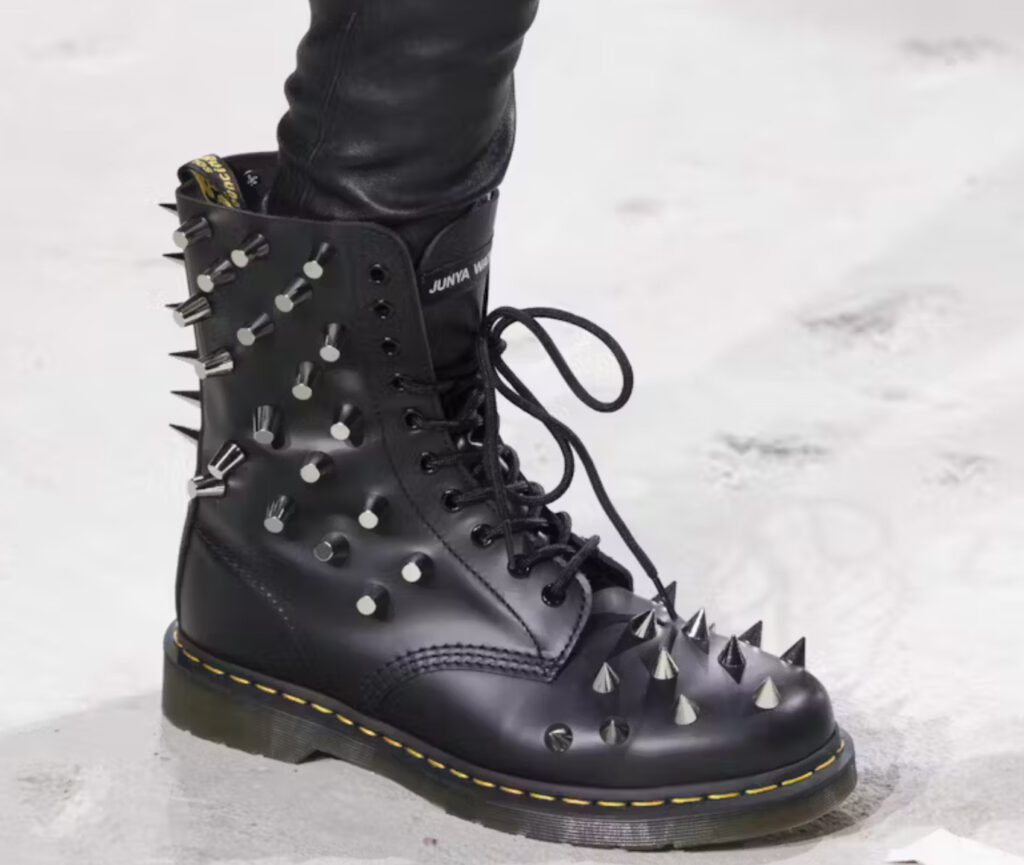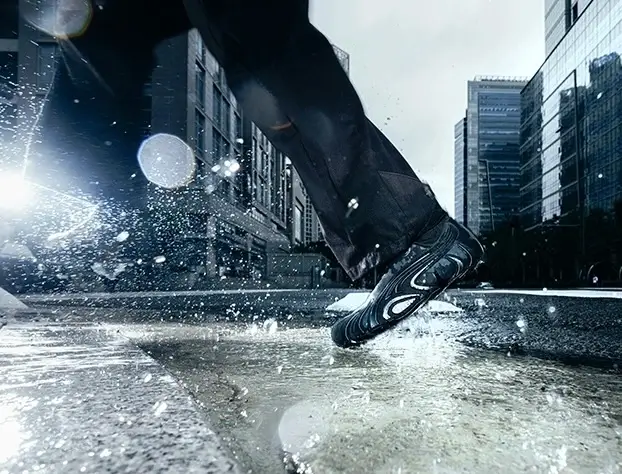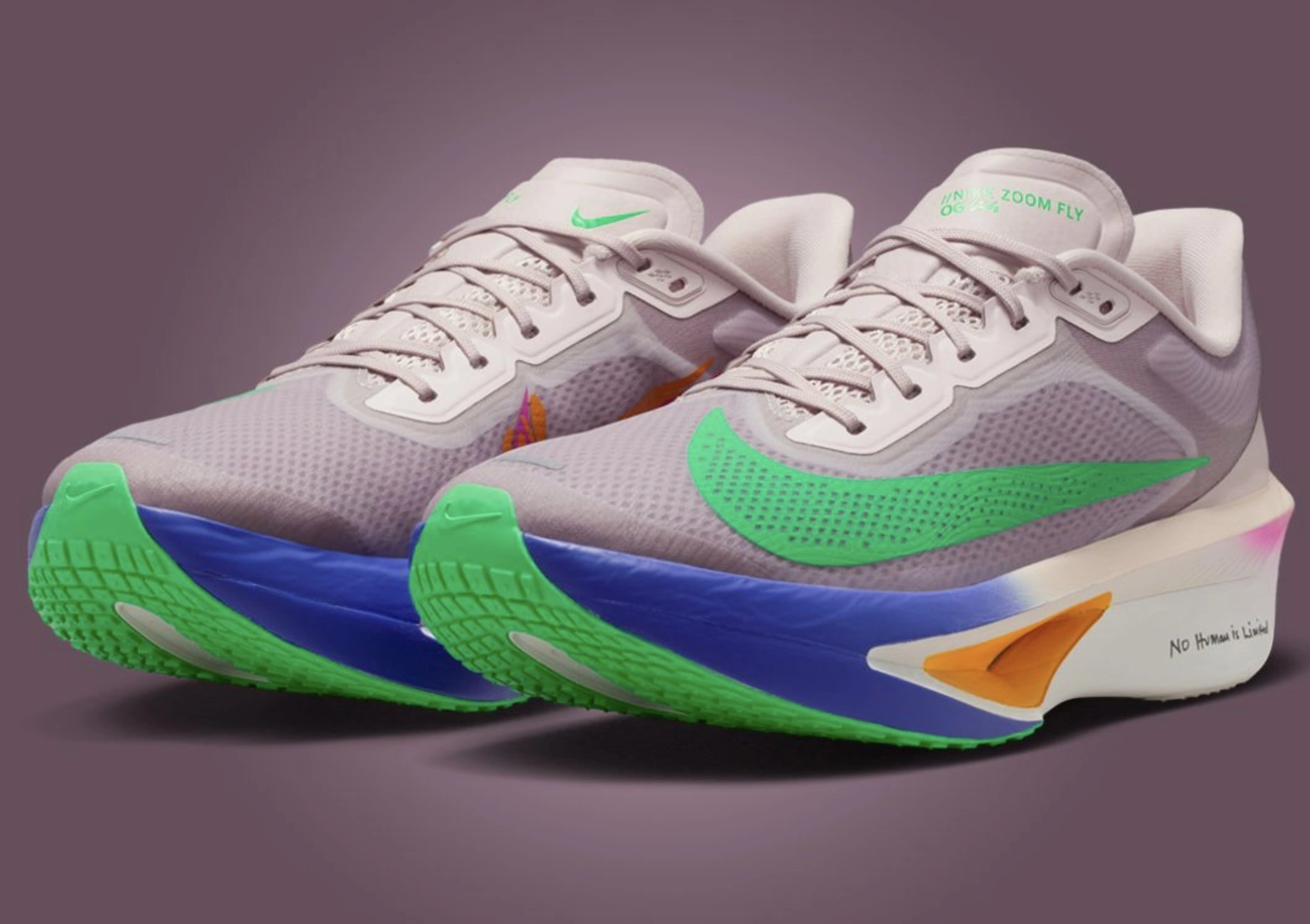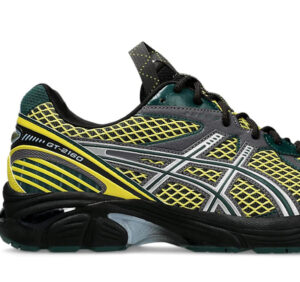At Paris Fashion Week, the runway is often a space for spectacle—but for Junya Watanabe, it’s a place of controlled rebellion. His latest collaboration with Dr. Martens for the Fall/Winter 2025 collection turns the iconic boot into a canvas for high-concept experimentation. What results is more than a footwear drop; it’s a study in contrasts: punk versus polish, structure versus anarchy, utility versus art.
Junya Watanabe isn’t new to collaborations, nor is he a stranger to twisting expectations. As a longtime protégé under Rei Kawakubo of COMME des GARÇONS, Watanabe has carved a niche for himself by taking familiar forms and radically reworking them.
Past team-ups with brands like Levi’s, New Balance, and Carhartt have proven that he has a gift for hybridizing streetwear with avant-garde design language. Dr. Martens, known globally for its utilitarian, punk-adjacent aesthetic, is an ideal partner for Watanabe’s conceptual yet grounded vision.
The convergence was unveiled as part of his Fall/Winter 2025 show in Paris—a collection that toyed with cubist structure, three-dimensional form, and the deconstruction of archetypes like the trench coat, the moto jacket, and yes, the combat boot.
Reinventing an Icon
At the heart of this connection is the classic 1460 Dr. Martens boot. First released on April 1, 1960, the 8-eyelet boot was originally designed as a work boot, only to be adopted by youth subcultures from British punks to American grunge kids. It’s a symbol of rebellion, but also a blueprint—one that Watanabe smartly disrupts.
The Watanabe x Dr. Martens version keeps the fundamental DNA: smooth black leather, yellow stitching, the air-cushioned sole. But then come the interruptions—bold silver punk studs line the heel and collar, angled panels hint at cubist disorientation, and geometric overlays distort the classic shape into something much more sculptural. Some versions also feature Watanabe’s name prominently displayed on the tongue, a rare but purposeful move that signals authorship and exclusivity.
What makes these boots feel so distinct is the layering of references. The studs nod to late-‘70s punk uniforms, while the cubist elements feel lifted from an art gallery. Yet the boots don’t feel overloaded—they maintain the toughness of the original design while being unmistakably Watanabe.
Aesthetic Direction: Punk Meets Cubism
Watanabe has always shown a deep interest in geometry and form. His Fall/Winter 2025 collection reflects a deep dive into cubism—not the literal replication of Picasso paintings, but the aesthetic principle of fragmentation. Jackets and coats were built with layered triangular patches and hexagonal shapes that broke up the silhouette into unexpected dimensions. The boots echo this visual language. They’re not just accessories—they’re extensions of the larger sculptural narrative.
The punk element adds grit. The studs are aggressive and metallic, not decorative. They speak of resistance, not refinement. Paired with the precision of cubist geometry, you get an unusual tension: rage in structure, chaos within order. It’s this duality that gives the boots their bite—and their appeal.
Material and Craft
Dr. Martens is known for its durable, high-quality leather and Goodyear welt construction. Watanabe didn’t touch the foundational craftsmanship—why fix what isn’t broken? Instead, he worked around it. The materials are used as a framework, not a limitation. Studs are not merely glued on but integrated with clean, structural lines. Angled panels are cut with precision to maintain wearability while adding an unexpected visual rhythm.
Even though the boots look heavy and adorned, they remain practical. This isn’t runway-only fashion. They’re meant to be worn—on city streets, in clubs, on stage, wherever rebellion still has a place.
The Runway Moment
At the Paris Fashion Week show, these boots were styled as integral parts of Watanabe’s FW25 looks. Models wore them with oversized, sharply angled coats, military-style jackets, and denim pieces that were cut into puzzle-like panels. The visual impact was stark: the boots anchored the futuristic designs, giving them a grounding in punk’s lived-in legacy. In motion, the studs caught light, glinting beneath deconstructed hems and sculptural folds.
The boots also played a practical role—giving the collection weight. When dealing with experimental silhouettes, especially ones that lean architectural, footwear has to balance the look. Watanabe’s reimagined Dr. Martens did just that, adding attitude without overpowering the garments.
Audience and Appeal
This isn’t a mass-market drop, and it’s not trying to be. The Junya Watanabe x Dr. Martens collection is for the style-curious, the collectors, the die-hard fans of both brands. It appeals to those who understand design not just as decoration but as commentary. For someone who grew up lacing Dr. Martens in the ‘90s, this collection might be nostalgic, but it’s also aspirational—a version of the boot that has matured, evolved, and acquired new layers of meaning.
For younger audiences—particularly those immersed in fashion-forward streetwear—this collection provides something subversive. It resists trend cycles. It’s not minimalist, normcore, or Y2K. It’s its own thing. And in a world of fast-fashion sameness, that alone makes it valuable.
Cultural Significance
Dr. Martens has always symbolized defiance, from factory floors to punk concerts. Watanabe, meanwhile, represents high-fashion intellect and risk-taking. Bringing them together is more than a product partnership—it’s a cultural statement. It shows how heritage can be disrupted without being erased. It’s a reminder that fashion doesn’t have to choose between art and wearability, history and innovation, grit and intellect.
This flow also aligns with a larger movement in fashion: the reintegration of subculture into high fashion. After years of clean lines and normcore neutrality, designers like Watanabe are bringing back subcultural depth—punk, goth, rave—not as trend gestures but as design philosophies.
Final Thoughts
The Junya Watanabe x Dr. Martens Fall/Winter 2025 boots aren’t just a remix of a classic—they’re a challenge to the idea of what a classic even is. In Watanabe’s hands, the boot becomes more than footwear. It becomes form, politics, memory, and experiment all in one.
They’re not for everyone—and that’s the point. These boots weren’t designed to blend in or quietly pay homage. They were made to stand out, start conversations, and carry the legacy of rebellion into the next era.
No comments yet.








